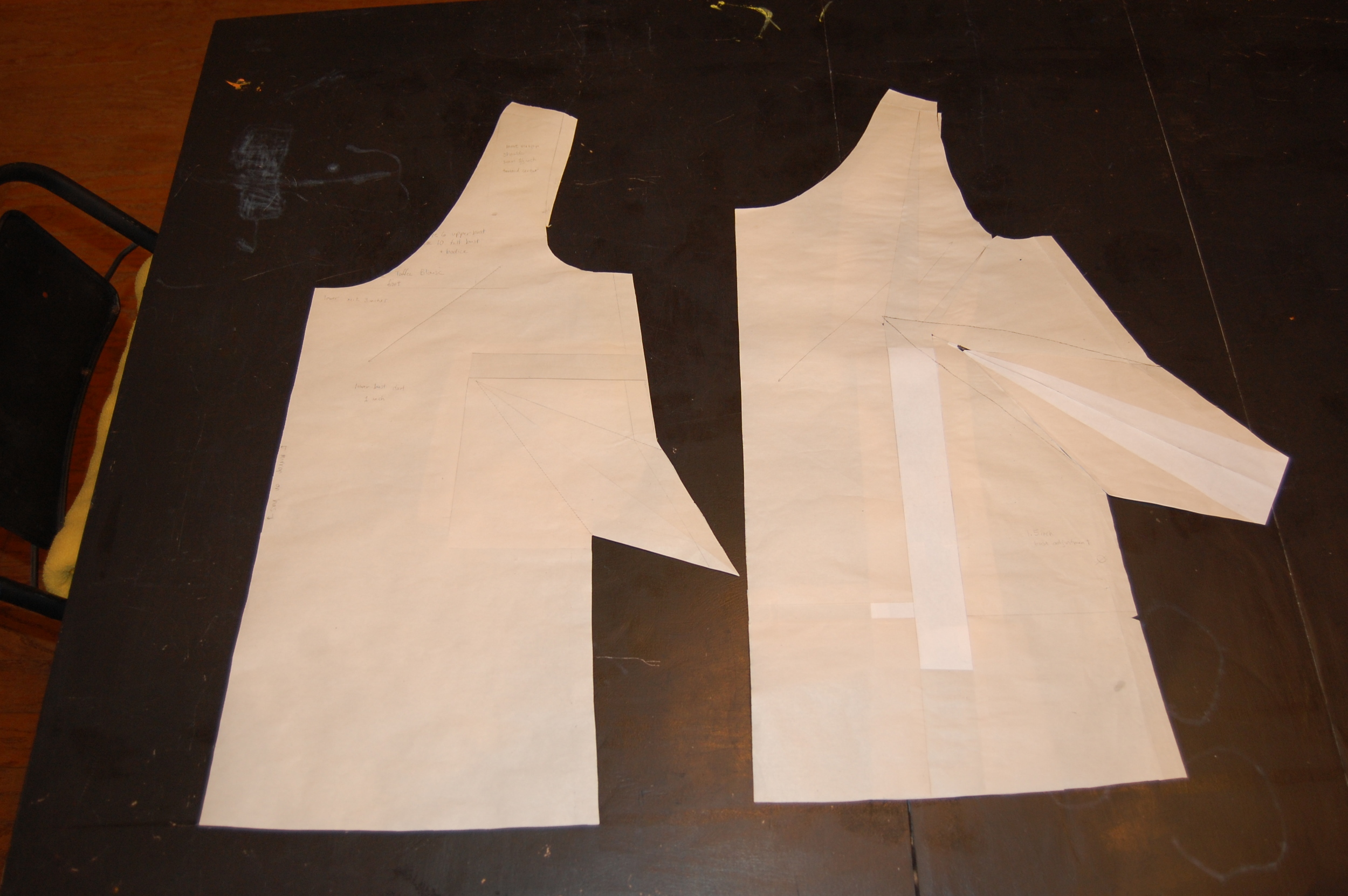The Small Shoulder Adjustment
/As I said in my previous post, while working on the Taffy blouse from Colette Patterns I became a bit disenchanted with the Full Bust Adjustment, and decided to try the small shoulder adjustment instead. It worked beautifully, and now I am ready to share with you the method and the results. I began by copying the front and back bodice pieces that corresponded to my full bust measurement. On the copy I also traced the upper portion of the pattern size corresponding to my high bust measurement. At the bottom of the armscye, I blended the smaller shoulder into the larger side seam. This new line was my new armscye.
If the length of the new armscye was more than 1.5 inches bigger than the sleeve, then the sleeve cap would have to be adjusted to compensate for the new size of the armsyce as well. Fortunately, that was not the case with this sleeve cap, and no adjustments had to be made. Frankly the idea of adjusting the sleeve cap of this bizarrely shaped sleeve is the stuff of nightmares, and I thanked God that it didn't have to be adjusted.
The initial tissue fitting indicated that I was pretty close to a great fit, and a muslin indicated that it was nearly perfect. Here is the result.
I think that a comparison of the FBA adjustment and the small shoulder adjustment makes the difference in fit pretty apparent. The armsyce is really distorted after the large FBA, but looks pretty normal after the small shoulder adjustment.
Like nearly all pattern adjustments the small shoulder adjustment can be done in more than one way. My way, is simply that, my way. It is not necessarily the best way, or the "correct" way, but it is what worked for me, and I will continue using it, until I find something that works better.
















